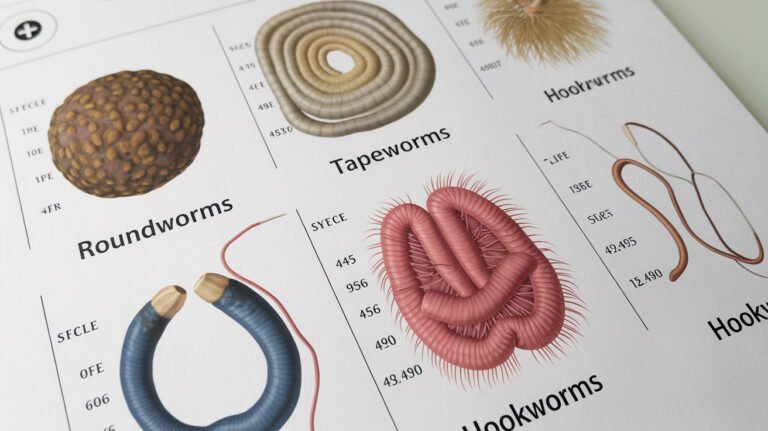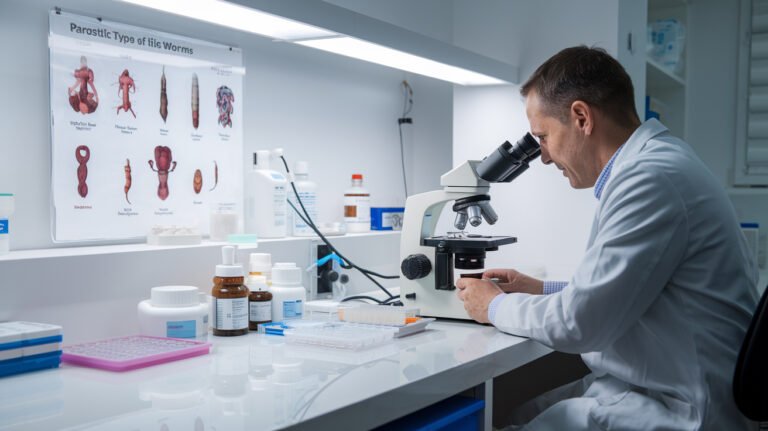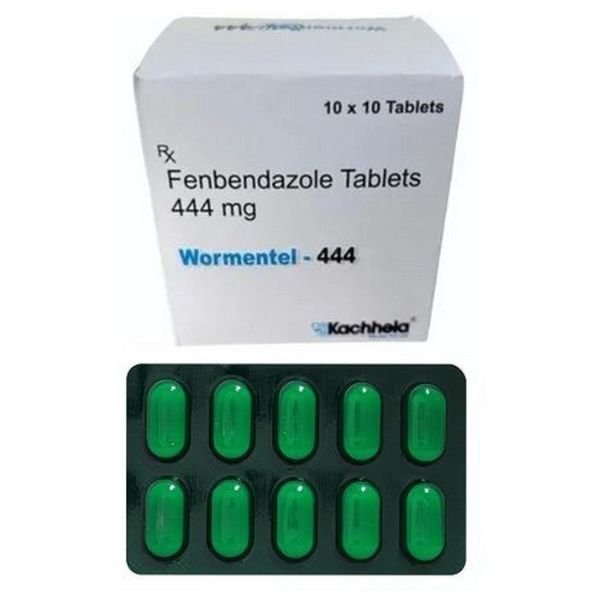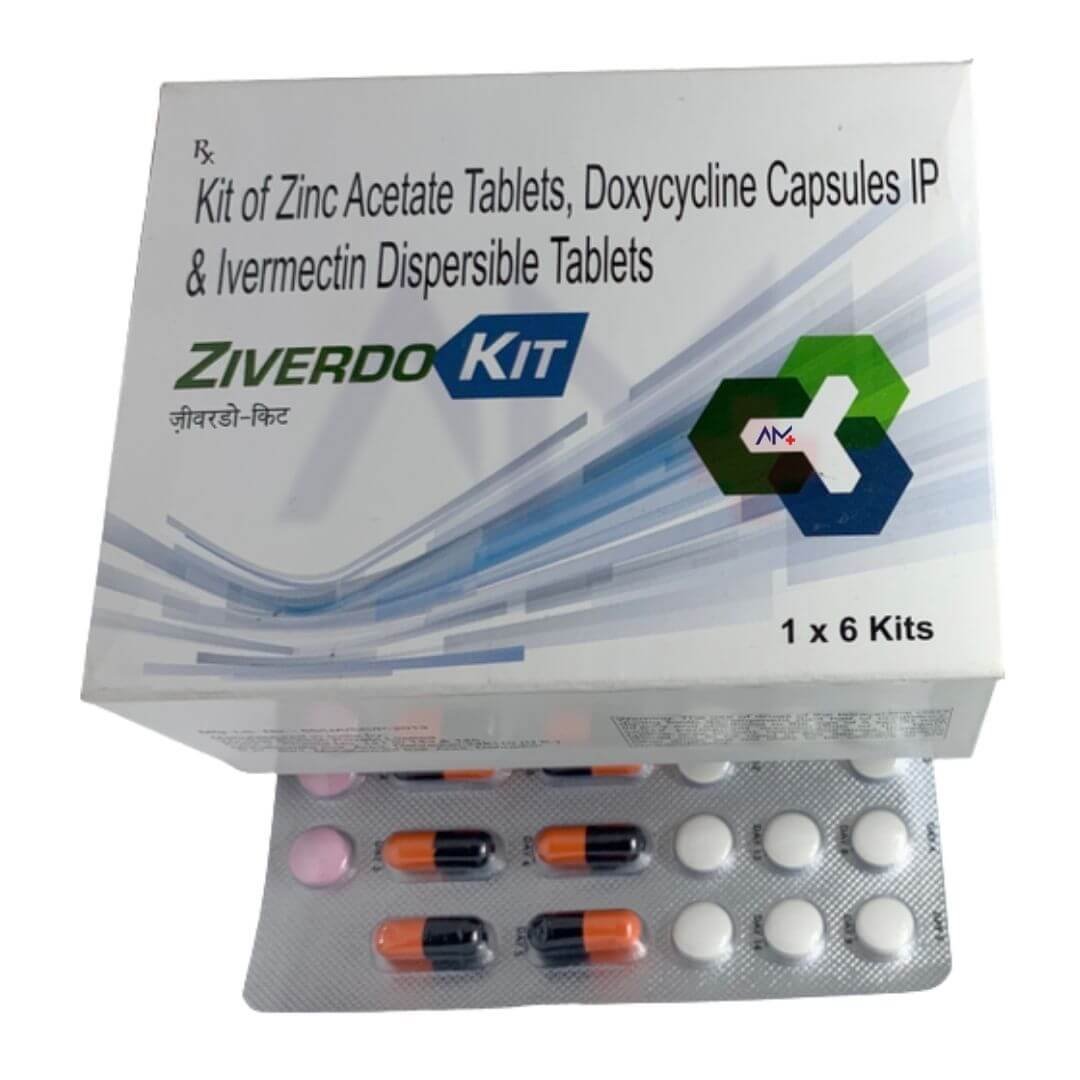Have you ever experienced unexplained fatigue, abdominal pain, or sudden weight loss? 🤔 These could be signs of an unwelcome guest in your body – parasitic worms. While the thought of these tiny invaders might make your skin crawl, understanding them is crucial for your health and well-being.
Parasitic worm infections affect millions of people worldwide, yet they often go unnoticed or misdiagnosed. From the common pinworm to the more serious tapeworm, these silent intruders can wreak havoc on your health if left untreated. But don’t worry – knowledge is power, and we’re here to arm you with the information you need to protect yourself and your loved ones.
In this comprehensive guide, we’ll dive deep into the world of parasitic worm infections. We’ll explore their causes, help you recognize the symptoms, and discuss effective diagnosis methods. Plus, we’ll cover treatment options, prevention strategies, and the long-term health implications of these infections. So, buckle up and prepare to become a parasite-fighting pro! 💪🏽🦠
Common Parasitic Worm Infections

A. Roundworms
Roundworms, also known as nematodes, are among the most prevalent parasitic worm infections worldwide. These cylindrical worms can grow up to 35 cm in length and primarily inhabit the human intestinal tract. Common species include Ascaris lumbricoides and Toxocara canis.
Key characteristics of roundworm infections:
-
Transmission: Ingestion of contaminated soil or food
-
Lifecycle: Eggs hatch in the intestines, larvae migrate through organs
-
Symptoms: Abdominal pain, diarrhea, weight loss, and malnutrition
B. Tapeworms
Tapeworms are flat, segmented parasites that can reach lengths of up to 30 feet. They attach to the intestinal wall and absorb nutrients from their host. Common species include Taenia saginata (beef tapeworm) and Diphyllobothrium latum (fish tapeworm).
|
Tapeworm Species |
Primary Host |
Transmission |
|---|---|---|
|
Taenia saginata |
Cattle |
Undercooked beef |
|
Diphyllobothrium latum |
Fish |
Raw or undercooked fish |
C. Hookworms
Hookworms are small, thin worms that attach to the intestinal wall and feed on blood. The two main species affecting humans are Ancylostoma duodenale and Necator americanus.
Characteristics of hookworm infections:
-
Entry: Larvae penetrate the skin, usually through bare feet
-
Migration: Travel through bloodstream to lungs, then to small intestine
-
Impact: Can cause severe anemia and malnutrition
D. Pinworms
Pinworms, or Enterobius vermicularis, are small, thread-like worms that infect the colon and rectum. They are particularly common in children and can spread easily in close-contact environments.
Pinworm infection cycle:
-
Female worms lay eggs around the anus
-
Eggs cause itching, leading to scratching
-
Contaminated hands spread eggs to surfaces or mouth
-
Ingested eggs hatch and mature in the intestine
Understanding these common parasitic worm infections is crucial for proper diagnosis and treatment. Each type presents unique challenges and requires specific approaches for effective management.
Causes of Parasitic Worm Infections

Poor sanitation
Poor sanitation practices significantly contribute to the spread of parasitic worm infections. In areas lacking proper waste management systems, human and animal feces can contaminate soil and water sources, creating an ideal environment for parasites to thrive.
Contaminated food and water
Consuming contaminated food or water is a common route of transmission for parasitic worms. This can occur through:
-
Drinking untreated water
-
Eating unwashed fruits and vegetables
-
Consuming undercooked meat or fish
Skin contact with contaminated soil
Many parasitic worms can penetrate the skin when a person comes into contact with contaminated soil. This is particularly common in areas where people:
-
Walk barefoot
-
Work in agriculture without proper protection
-
Play in contaminated soil
Close contact with infected individuals
Some parasitic worms can spread through close contact with infected individuals, especially in crowded living conditions. This includes:
-
Sharing personal items
-
Poor hygiene practices
-
Intimate contact
Pet-to-human transmission
Pets can be carriers of certain parasitic worms, which can then infect humans. Common ways this occurs include:
|
Transmission Method |
Example |
|---|---|
|
Direct contact |
Petting infected animals |
|
Indirect contact |
Cleaning litter boxes or pet waste |
|
Environmental |
Playing in areas where pets defecate |
Understanding these causes is crucial for implementing effective prevention strategies. By addressing these risk factors, individuals and communities can significantly reduce their exposure to parasitic worm infections. Next, we’ll explore how to recognize the symptoms of these infections, which is essential for early detection and treatment.
Recognizing Symptoms

Digestive issues
Parasitic worm infections often manifest through various digestive problems. Common symptoms include:
-
Abdominal pain or discomfort
-
Diarrhea, which may be persistent or intermittent
-
Nausea and vomiting
-
Bloating and gas
-
Loss of appetite
These symptoms can vary in intensity and may mimic other gastrointestinal disorders, making diagnosis challenging.
Fatigue and weakness
Parasites can deplete the body’s nutrients, leading to:
-
Chronic fatigue
-
Muscle weakness
-
Reduced energy levels
-
Difficulty concentrating
These symptoms often develop gradually and may be mistaken for other conditions like anemia or chronic fatigue syndrome.
Unexplained weight loss
Despite maintaining regular eating habits, individuals with parasitic infections may experience:
-
Sudden or gradual weight loss
-
Difficulty gaining weight
-
Changes in appetite (increased or decreased)
|
Cause of Weight Loss |
Explanation |
|---|---|
|
Nutrient depletion |
Parasites consume host’s nutrients |
|
Malabsorption |
Damage to intestinal lining affects nutrient absorption |
|
Increased metabolism |
Body’s immune response to infection |
Skin problems
Parasitic worm infections can manifest on the skin, causing:
-
Rashes or hives
-
Itching, especially around the anus or vulva
-
Skin lesions or sores
-
Swelling or inflammation
These dermatological symptoms may be localized or widespread, depending on the type of parasite and the extent of the infection.
Now that we’ve explored the common symptoms of parasitic worm infections, let’s examine the various methods used to diagnose these conditions.
Diagnosis Methods

Stool sample analysis
Stool sample analysis is the gold standard for diagnosing many parasitic worm infections. This non-invasive method involves collecting a small amount of feces and examining it under a microscope. Technicians look for:
-
Eggs or larvae of parasitic worms
-
Adult worms or segments
-
Microscopic cysts of certain parasites
The effectiveness of this method depends on the timing of sample collection and the expertise of the laboratory technician. Multiple samples over several days may be required for accurate diagnosis.
|
Parasite |
What to Look For |
|---|---|
|
Hookworms |
Oval-shaped eggs |
|
Tapeworms |
Egg-filled segments |
|
Roundworms |
Large, oval eggs |
Blood tests
While less specific than stool analysis, blood tests can provide valuable information about parasitic infections:
-
Complete Blood Count (CBC): May show elevated eosinophils, indicating a parasitic infection
-
Antibody tests: Detect the immune system’s response to specific parasites
-
Antigen tests: Identify proteins produced by the parasites themselves
These tests are particularly useful when stool samples are inconclusive or for detecting parasites that may not always appear in stool.
Imaging techniques
In some cases, imaging techniques can help visualize parasites or the damage they cause:
-
Ultrasound: Can detect cysts or lesions caused by certain parasites
-
CT scans: Provide detailed images of organs affected by parasitic infections
-
MRI: Offers high-resolution images, useful for detecting brain or spinal cord involvement
These methods are especially valuable for diagnosing parasitic infections that affect internal organs or tissues not accessible through stool or blood tests.
Effective Treatment Options

Antiparasitic medications
Antiparasitic medications are the cornerstone of treating parasitic worm infections. These drugs work by either killing the parasites or paralyzing them, allowing the body to eliminate them naturally. Common antiparasitic medications include:
-
Albendazole
-
Mebendazole
-
Ivermectin
-
Praziquantel
|
Medication |
Common Target Parasites |
Typical Course |
|---|---|---|
|
Albendazole |
Roundworms, hookworms |
1-3 days |
|
Mebendazole |
Pinworms, whipworms |
1-3 days |
|
Ivermectin |
Strongyloides, scabies |
Single dose |
|
Praziquantel |
Tapeworms, flukes |
1-3 days |
It’s crucial to follow the prescribed dosage and complete the full course of treatment to ensure effectiveness.
Supportive care
While antiparasitic medications target the worms directly, supportive care helps manage symptoms and promotes recovery. This may include:
-
Oral rehydration therapy
-
Iron supplements for anemia
-
Pain management
-
Nutritional support
Lifestyle changes
Implementing lifestyle changes is essential for both treatment and prevention of future infections. Key changes include:
-
Improved hygiene practices
-
Proper food handling and preparation
-
Avoiding contaminated water sources
-
Regular deworming of pets
These changes, combined with medication and supportive care, form a comprehensive approach to treating parasitic worm infections effectively. Next, we’ll explore strategies to prevent these infections from occurring in the first place.
Prevention Strategies

Proper hygiene practices
Maintaining good personal hygiene is crucial in preventing parasitic worm infections. Here are some essential practices:
-
Wash hands thoroughly with soap and water:
-
Before preparing or eating food
-
After using the toilet
-
After handling pets or soil
-
-
Keep fingernails short and clean
-
Avoid walking barefoot in contaminated areas
Safe food and water consumption
Ensuring the safety of food and water is vital to prevent parasitic worm infections:
|
Food Safety |
Water Safety |
|---|---|
|
Wash fruits and vegetables thoroughly |
Boil water for at least 1 minute |
|
Cook meat to appropriate temperatures |
Use water filters certified for parasite removal |
|
Avoid raw or undercooked fish and shellfish |
Avoid swallowing water while swimming |
Regular deworming for pets
Pets can be carriers of parasitic worms, making regular deworming essential:
-
Follow veterinarian-recommended deworming schedules
-
Practice good hygiene when handling pet waste
-
Keep pets’ living areas clean and sanitized
Community-wide interventions
Effective prevention strategies often require community-wide efforts:
-
Implement mass drug administration programs in high-risk areas
-
Improve sanitation infrastructure and access to clean water
-
Conduct public health education campaigns on prevention methods
-
Encourage regular health check-ups and screenings
By adopting these prevention strategies, individuals and communities can significantly reduce the risk of parasitic worm infections. These measures not only protect against worms but also promote overall health and well-being. As we move forward, it’s important to understand the potential long-term health implications of parasitic worm infections, which we’ll explore in the next section.
Long-term Health Implications

Nutritional deficiencies
Parasitic worm infections can lead to severe nutritional deficiencies, impacting overall health and well-being. These deficiencies occur due to:
-
Malabsorption of nutrients
-
Increased metabolic demands
-
Appetite suppression
Common nutritional deficiencies associated with parasitic worm infections include:
Nutrient |
Impact on Health |
|---|---|
|
Iron |
Anemia, fatigue |
|
Vitamin A |
Vision problems, weakened immune system |
|
Vitamin B12 |
Neurological issues, cognitive decline |
|
Protein |
Muscle wasting, impaired growth |
Developmental issues in children
Children are particularly vulnerable to the long-term effects of parasitic worm infections. These infections can lead to:
-
Stunted growth
-
Cognitive impairment
-
Delayed physical development
-
Reduced school performance
The combination of nutritional deficiencies and chronic inflammation can have lasting impacts on a child’s potential, affecting their educational and economic opportunities later in life.
Chronic health problems
Untreated or recurrent parasitic worm infections can result in various chronic health issues:
-
Gastrointestinal disorders (e.g., irritable bowel syndrome)
-
Compromised immune function
-
Increased susceptibility to other infections
-
Organ damage (e.g., liver fibrosis in schistosomiasis)
These long-term health implications underscore the importance of early detection, treatment, and prevention of parasitic worm infections. Regular screening and deworming programs, especially in endemic areas, can significantly reduce the burden of these infections and their associated long-term health consequences.
Conclusion

Parasitic worm infections pose significant health risks worldwide, affecting millions of people across various demographics. By understanding the causes, recognizing symptoms, and seeking proper diagnosis, individuals can take proactive steps to protect themselves and their families. Effective treatment options, ranging from oral medications to surgical interventions, are available to combat these infections and minimize long-term health implications.
Prevention remains the most powerful tool in the fight against parasitic worms. By implementing simple yet effective strategies such as practicing good hygiene, ensuring proper sanitation, and being cautious with food and water sources, we can significantly reduce the risk of infection. Stay informed, remain vigilant, and consult healthcare professionals if you suspect a parasitic worm infection. Together, we can work towards a healthier, worm-free future.



















Add comment